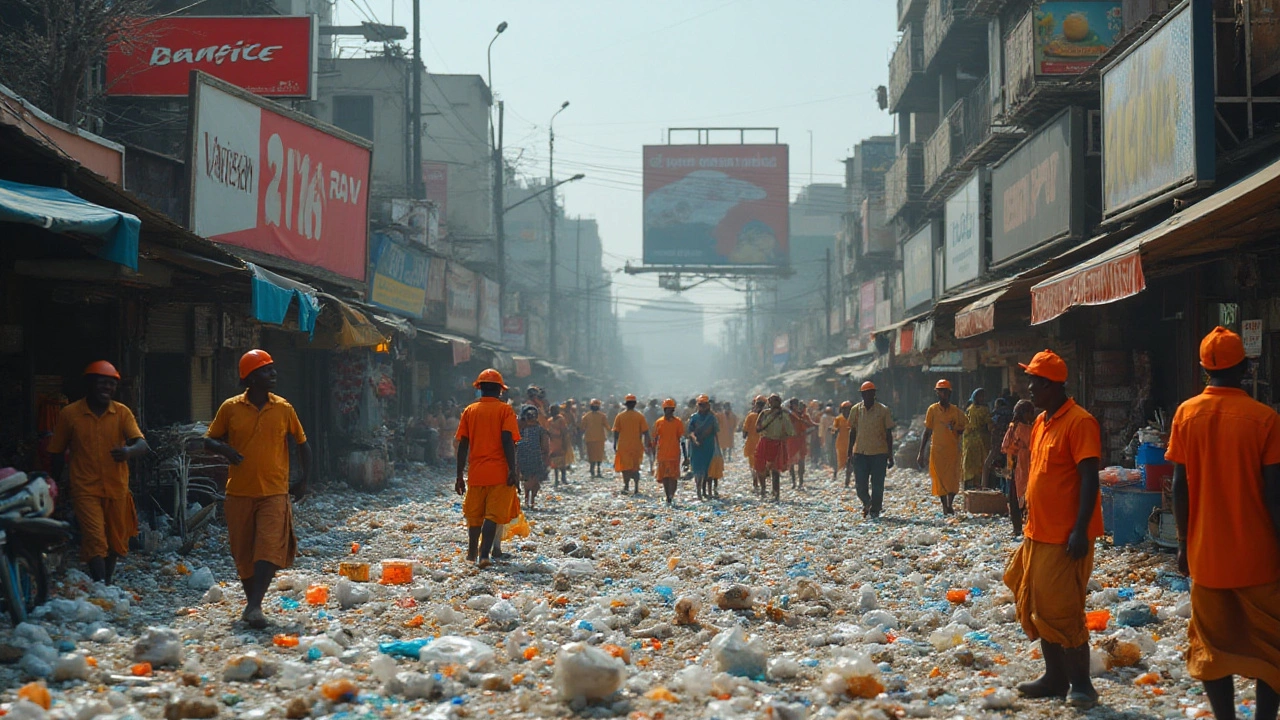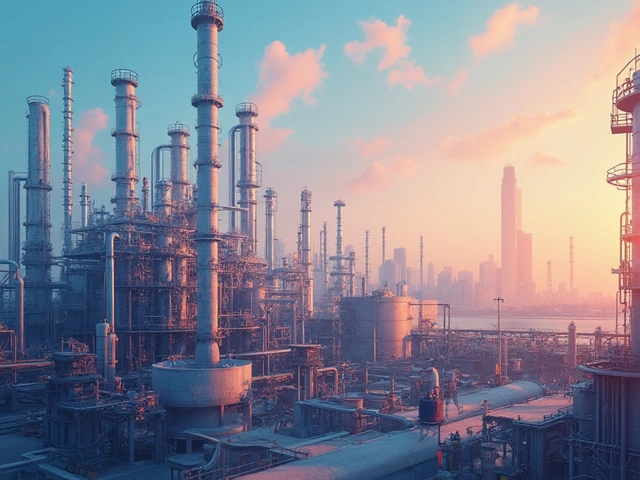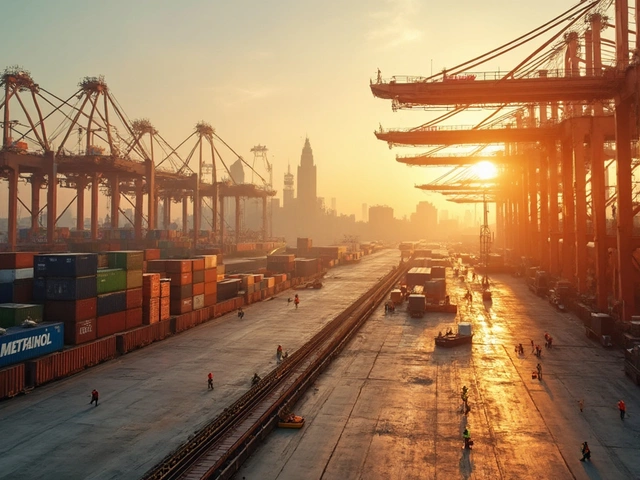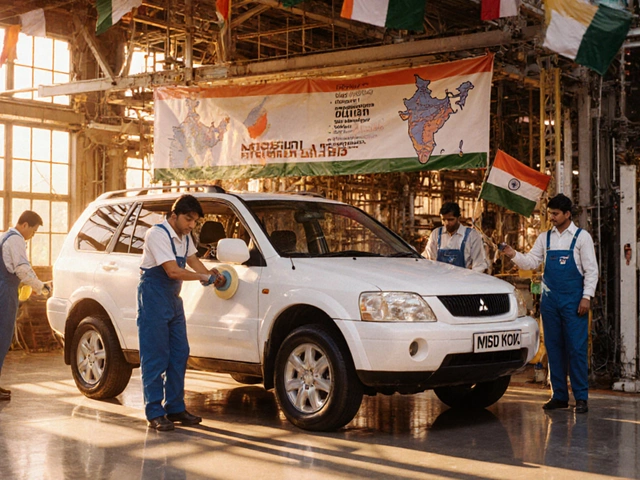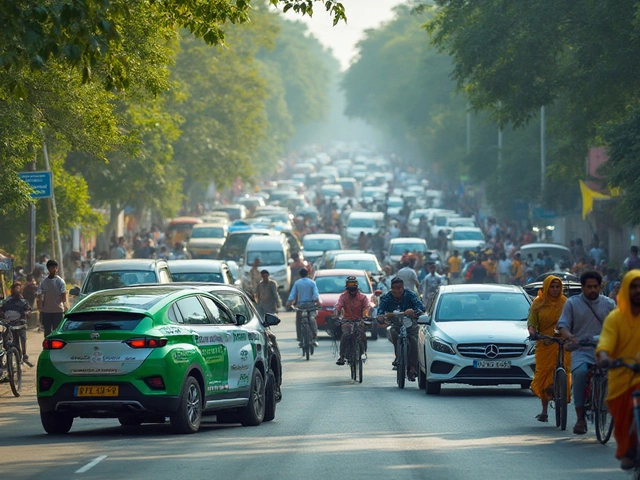Plastic pollution has become one of the most critical environmental issues of our time, drawing attention from policymakers, environmentalists, and the general public. At the heart of this problem lies the production and disposal of single-use plastics, which are mainly manufactured by large corporations. The open seas, wildlife, and even human health have been marred by the ubiquity of plastic waste.
The commercial behemoths responsible for the majority of plastic output often hide in plain sight, behind familiar logos and household products. Recognizing these companies is a crucial step toward fostering accountability. While several initiatives are underway to address these issues, understanding the scale of pollution driven by these corporations provides essential context for solutions and innovations aimed at turning the tide.
- Understanding Plastic Pollution
- The Biggest Plastic Polluters
- Impact of Major Plastics Companies
- Efforts for Reduction and Recycling
- What Can Consumers Do?
Understanding Plastic Pollution
Plastic pollution refers to the accumulation of plastic objects and particles in the Earth's environment, adversely impacting wildlife, wildlife habitat, and humans. The use of plastic surged dramatically after World War II, mainly because of its versatility, durability, and minimal cost. Today, it's estimated that humans produce over 300 million metric tons of plastic annually, of which a staggering amount is meant for single-use purposes, leading to its rapid discard and ensuring that it eventually finds its way to oceans, rivers, and landfills. One of the stark realities of plastic waste is its longevity; unlike organic materials, plastic does not decompose but only breaks down into smaller and less manageable pieces, known as microplastics, that pervade every corner of our planet, from the deepest ocean trenches to the peaks of remote mountains.
This pollution poses a significant threat not only to marine and terrestrial ecosystems but also to human health. Marine life, for instance, is often entangled in or mistakenly ingests plastic, which can lead to injuries and fatalities. Compounding this issue, plastics can act as a sponge for toxic substances, further harming the creatures that ingest them. Humans, too, are at risk, as microplastics have been discovered in drinking water, food, and even the air we breathe. Plastic pollution influences a whole spectrum of health concerns, from respiratory issues to reproductive problems, underscoring the urgent need for addressing this environmental crisis.
Economically, plastic pollution burdens local economies, especially in communities reliant on tourism and fishing, where clean beaches and healthy marine life are paramount. The cleanup costs alone can be astronomical. According to the United Nations, the natural capital cost of plastic use in the consumer goods sector alone is estimated at over $75 billion each year. In an effort to combat this rampant problem, various stakeholders are stepping up. For instance, scientists and innovators are developing biodegradable plastics and novel recycling techniques while environmental activists raise awareness and push for more stringent environmental regulations.
The role of consumer behavior in plastic waste cannot be understated. With global awareness rising, individuals are pursuing more sustainable alternatives, pressuring companies to reduce their reliance on plastic and improve their recycling efforts. This push is slowly paving the way for a circular economy where products are designed for reuse, repair, and recycling. Legislation also plays a crucial part in mitigating this issue, as governments worldwide work to implement bans on single-use plastics, improve waste management systems, and promote extended producer responsibility (EPR) schemes, where manufacturers are held accountable for the full lifecycle of their products.
The challenge of plastic pollution is daunting, yet it is not insurmountable with concerted global efforts. In the words of renowned environmentalist David Attenborough, "The future of humanity and indeed all life on Earth now depends on us." This sentiment speaks volumes about the gravity of the situation and the potential we, as a society, hold to engineer change. It is a collaborative endeavor demanding participation from all sectors of society, from governments and corporations to individuals intent on safeguarding the planet for generations to come.
The Biggest Plastic Polluters
Diving into the murky waters of plastic pollution, it becomes clear that certain companies consistently top the list of the world's biggest plastic polluters. These industrial giants produce a staggering amount of plastic materials each year, which often end up as non-biodegradable waste in landfills and oceans. The Break Free From Plastic movement, which compiles an annual brand audit report, frequently highlights companies like Coca-Cola, Nestlé, and PepsiCo as leaders of this unintended pack. Their ubiquitous packaging, from bottles to wrappers, forms a significant portion of marine debris, transforming pristine beaches into eyesores.
In 2022, the audit revealed that Coca-Cola was found as the top plastic polluter for the fifth consecutive year. Coca-Cola-branded waste was found in 40 countries across four continents, showcasing the sheer scale and international reach of its pollution. Nestlé and PepsiCo followed closely behind, with both companies appearing in cleanup reports from diverse regions of the globe. While these companies have pledged to make their packaging more sustainable, critics argue that their efforts lack the urgency and scope needed to tackle the crisis effectively. A senior researcher recently noted,
"Such commitments often seem more a publicity stunt than a genuine attempt to reduce environmental impact."
The issue is compounded by the sheer volume of plastic these corporations produce. The increased demand for single-use plastics, driven by convenience and consumer habits, adds another layer to the challenge. Although some companies are making strides toward sustainability by adopting recyclable and biodegradable alternatives, these initiatives remain a fraction of their production capabilities. Many advocate for governmental regulations to promote transparency and craft stringent guidelines to mitigate plastic pollution. Yet, until corporations devise a fundamental shift away from disposable plastics, progress will likely remain incremental.
Addressing the role of these plastic manufacturers requires a multi-faceted approach that involves consumers, policy makers, and the corporations themselves. One approach is enhancing recycling technology and infrastructure to handle the high volume of waste. In recent years, the emphasis on circular economy principles, which aim to keep resources in use for as long as possible, has gained traction. This concept encourages companies to design products with their end-of-life in mind, fostering innovation and reducing environmental footprints. However, achieving this vision demands substantial investment and prioritization by companies and states alike.
Additionally, public pressure continues to play a pivotal role in influencing corporate behavior. Modern consumers are more environmentally aware and are increasingly demanding greater corporate responsibility. Movements such as "Trash Tags" and online petitions have amplified the call for change, urging brands to take tangible steps toward reducing their environmental impact. The shift in market dynamics, driven by consumer advocacy, supports the necessity for an integrated effort to combat plastic pollution and hold corporations accountable. As the narrative evolves, the need to identify and critique the leading culprits remains crucial to environmental protection efforts.
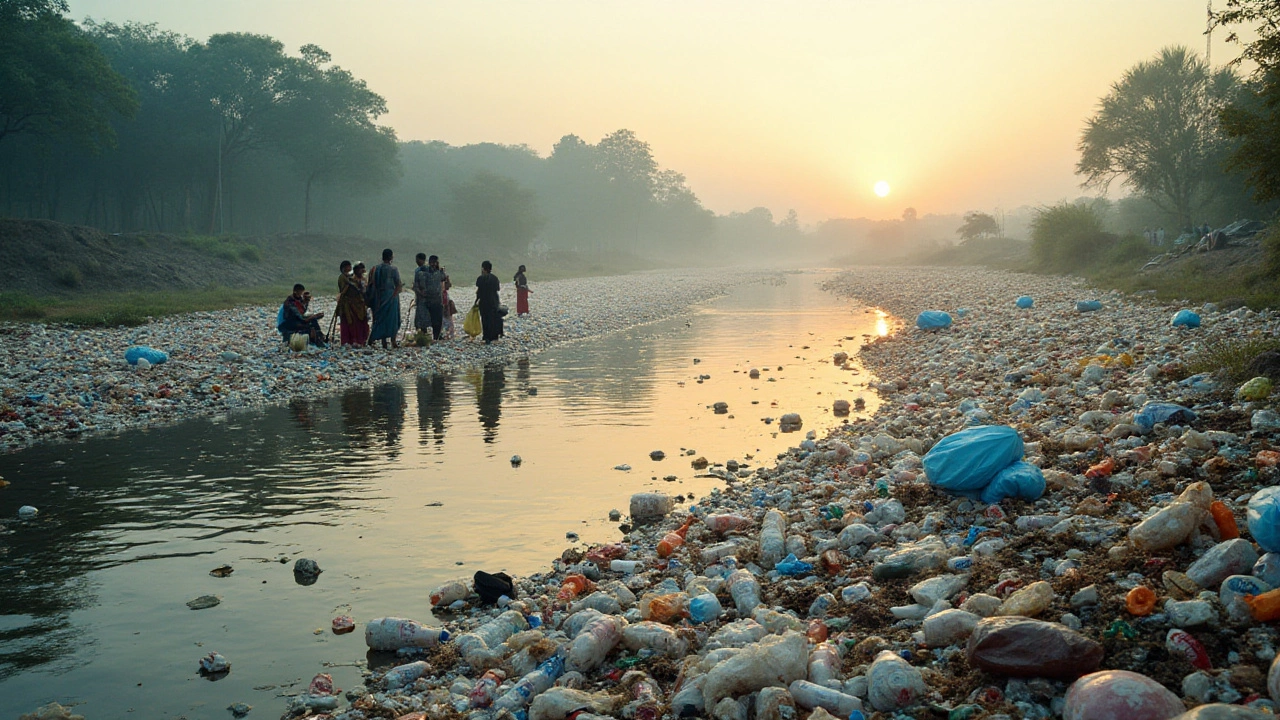
Impact of Major Plastics Companies
The impact of major plastic manufacturers on the environment cannot be overstated. These corporations possess enormous capacity for plastic production, churning out millions of tons annually to meet global demand. Their operations, often spanning multiple continents, contribute significantly to the accumulation of plastic waste in oceans and landfills. The extent of their environmental footprint is monumental, implicating them in numerous environmental challenges, including marine life endangerment and microplastic pollution.
A few companies consistently rank among the top polluters in reports from environmental watchdogs like Greenpeace and the Break Free From Plastic movement. For example, Coca-Cola, PepsiCo, and Nestlé are frequently identified as leading contributors to plastic waste. These companies not only produce vast quantities of single-use plastic products but also face criticism for insufficient recycling practices and inadequate response to the growing waste crisis. Despite claims of sustainability efforts, significant gaps remain between their production volumes and actual recycling capabilities.
The consequences of large-scale plastic manufacturing extend beyond pollution. There is an undeniable economic angle as well. These companies drive significant employment and capital investments in regions where factories and production facilities operate. However, the environmental toll is often externalized, leaving local communities to grapple with pollution. Many areas reliant on these industries suffer from inadequate waste management infrastructure, exacerbating their vulnerability to pollution.
Environmental Accountability
The public and governmental pressure for these corporations to implement environmentally responsible practices is mounting. Legislations are increasingly being introduced worldwide, aiming to curtail single-use plastics and mandate producer responsibility. Several governments are pushing for extended producer responsibility (EPR) schemes that ensure companies take back their product waste. While some corporations have begun embracing such measures, integrating sustainable practices within expansive supply chains remains a complex challenge. The situation necessitates holistic approaches, combining innovation in biodegradable materials and improvements in existing recycling systems.
"Plastic pollution is one of the most pressing environmental challenges of our time, and we need major plastics companies to lead the charge towards a circular economy," - Greenpeace.
In addition to legislative measures, changing consumer attitudes play a pivotal role. As individuals increasingly prioritize sustainability, there's a direct impact on companies' brand reputations. Savvy consumers prefer brands that demonstrate authentic commitment to reducing plastic waste. Consequently, many companies face the prospect of losing market share if they fail to adapt to these shifting preferences.
Despite some progress, reports suggest a noticeable disconnect between pledges made by corporations and their implementation timelines. Strategies to replace plastic packaging with alternative materials, like glass or paper, are being explored but require substantial R&D investment and changes in logistics. The economic feasibility of these alternatives often complicates the transition, particularly in developing economies where cost constraints are more acute.
| Company | Reported Plastic Waste (Tons) | Action Taken |
|---|---|---|
| Coca-Cola | 3 million | Sustainable packaging goals |
| Nestlé | 1.7 million | Pilot zero-waste initiatives |
| PepsiCo | 2.3 million | Partnerships for recycling |
Efforts for Reduction and Recycling
When tackling the issue of plastic pollution, it becomes imperative to focus on effective reduction and recycling efforts that have a tangible impact on the environment. Many global initiatives aim to curb the production of single-use plastics, driving industries toward more sustainable practices. A prominent example is the New Plastics Economy Global Commitment, which encourages companies to innovate their packaging solutions. Signatories of this commitment include numerous large corporations pledging to reduce their plastic footprint, enhance their recycling processes, and elevate the recyclability of their products.
The importance of strong recycling systems cannot be overstated in these initiatives. Countries and states have employed a variety of tactics to improve recycling infrastructure, like introducing bottle deposit schemes. These schemes incentivize the return and recycling of bottles by adding a small deposit at purchase, refundable upon return. Germany, known for its high recycling rates, serves as a model with its efficient bottle deposit system. Recycling rates in Germany can reach up to 98% for bottles, showcasing the potential of well-structured schemes.
Companies have also taken innovative steps to make a difference. Nestlé, for example, has launched goals to make 100% of its packaging recyclable or reusable by 2025. Similarly, Unilever has committed to halving its use of virgin plastic by 2025. Such bold measures signal a shift in corporate responsibility. However, it's essential these promises result in measurable environmental benefits.
"The need for action in reducing plastic waste should be urgent and accountable," states David Katz, CEO of Plastic Bank, an organization transforming waste into currency in developing countries.
Beyond corporate promises, collaboration between various stakeholders is crucial. Governments must tighten regulations and encourage innovation, while consumers actively participate by making conscious purchasing decisions. Consumer awareness about the origin of plastic manufacturing companies that dominate their daily usage can catalyze change. Emphasizing the demand for sustainable packaging has pushed brands to rethink product design. Additionally, advancements in chemical recycling, which break plastics down into their basic components to be reused, show promising potential to tackle recycling challenges.
Success Stories and Ongoing Challenges
While there have been notable successes, significant hurdles remain. A report by the Ellen MacArthur Foundation highlights that only 14% of plastic packaging is collected for recycling globally. To improve these statistics, continuous innovation in recycling technologies and policy support is needed. Developing infrastructure to manage plastic waste efficiently is an enduring challenge, particularly in developing regions where resources are limited.| Company | Plastic Reduction Goals |
|---|---|
| Nestlé | 100% recyclable or reusable packaging by 2025 |
| Unilever | Cut virgin plastic use by 50% by 2025 |
Successful reduction and recycling efforts hinge on cooperation and relentless innovation across all sectors. By marshaling combined efforts, it's possible to pave the way toward a future less burdened by plastic waste, ensuring a healthier planet for the generations to come.
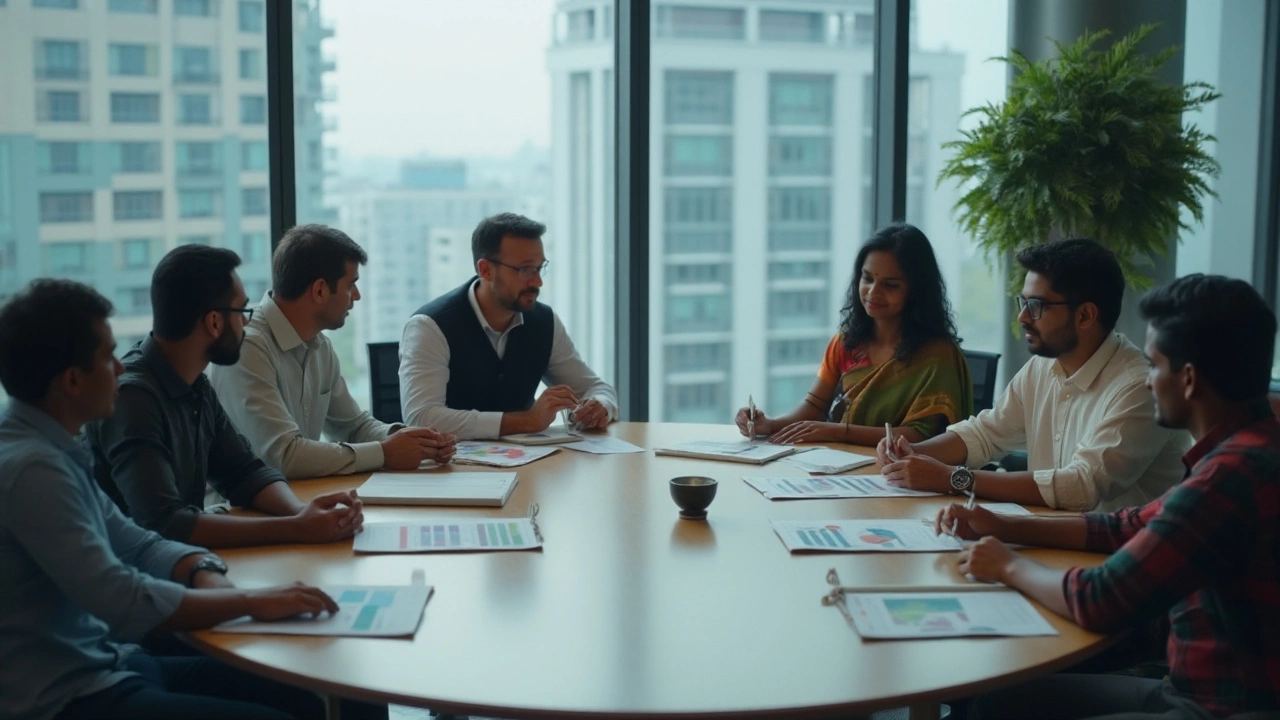
What Can Consumers Do?
In the quest to tackle plastic pollution, consumers wield more power than they often believe. Every purchase, every disposal, and every individual decision on reducing plastic footprint counts significantly. Awareness and patience are key in this journey towards a cleaner environment. One of the first steps consumers can take is scrutinizing the packaging of products and opting for items that utilize less plastic or employ sustainable materials. This can mean choosing products in glass, metal, or paper packaging whenever possible. Reusable bags, bottles, and containers are becoming staples in households for good reason. They are durable, versatile, and symbolize a commitment to reducing waste.
Another important action is participating in local recycling programs and understanding what can be recycled in your community. Often, rules vary from place to place, and knowing which plastics are recyclable can enhance the effectiveness of these initiatives. Supporting companies that prioritize sustainable practices through conscious spending is a powerful way to signal to corporations the importance of environmental responsibility. Consumers can vote with their wallets by choosing brands that have explicit policies on reducing plastic waste or switching to recyclable materials. Initiatives like zero-waste shopping, where buyers bring their own containers for groceries, are gaining traction and impact consumer habits positively.
Education plays a crucial role in this transformation. Engaging with community programs or online courses about plastic’s environmental impact further equips consumers with knowledge to make informed choices. Teaching young children about the importance of reducing plastic waste ensures the next generation is prepared to continue these efforts. Engaging with local policymakers to support legislation aimed at reducing single-use plastics can amplify consumer voices, pushing for large-scale changes. A direct way to influence change is joining or forming community cleanup projects. These initiatives not only clear local environments of plastic but bring attention to the stark realities of litter and its impact on wildlife.
Consumer actions can also be amplified through digital platforms. Sharing knowledge and encouraging networks to adopt sustainable habits fosters a global community dedicated to solving the issue of plastic waste. Platforms like social media provide a stage for advocating better practices and holding companies accountable. Collaboration among conscientious buyers can yield significant results, as collective consumer activism often does. Making simple swaps in everyday life, such as using bamboo utensils instead of plastic cutlery, can blossom into broader behavioral changes that ripple outwards, affecting social circles and larger communities.
According to a landmark report by the Ellen MacArthur Foundation, by 2050, there could be more plastic in the ocean than fish if current trends continue. This stark prediction encourages individuals worldwide to reconsider their plastic use and disposal habits.
It's important not to underestimate the impact of a single action. Each piece of reusable material keeps multiple single-use plastics from entering landfills or oceans over time. Creating home composting systems for biodegradable waste can further cut down on household refuse that requires disposal. In this light, reducing plastic use becomes more than a personal choice; it's a global necessity. By enacting small, everyday habits, consumers light a path towards sustainable living, and, collectively, these actions form a movement that can drive significant change.
